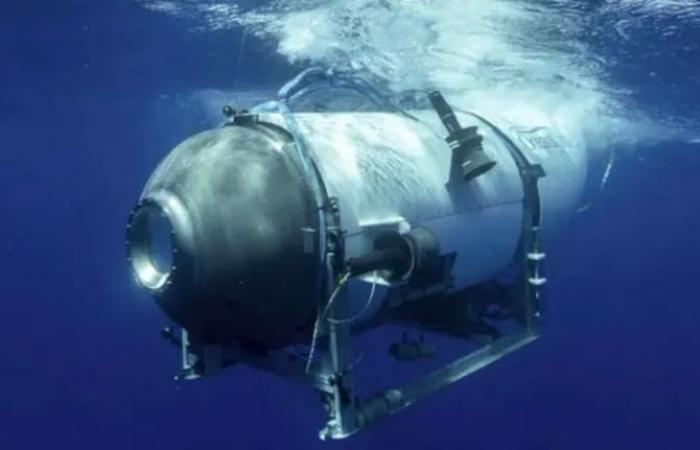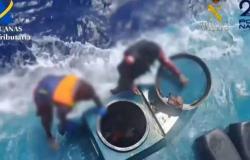
Hear
A year ago, the voyage of the submersible titanwhich carried five passengers to the wreckage of the Titanic liner, located about 4000 meters deep in the North Atlantic, was suddenly and permanently suspended.
“[El océano] It’s a place where you have to know what you’re doing very well before you can try new things. You don’t ‘move fast and break things’, as they say in Silicon Valley, if you’re inside the thing you’re going to break.” That’s what he told him James Camerondeep ocean explorer, scientist and filmmaker, to the program 60 Minutes AustraliaJune 9, 2024
The submersible imploded at the site of the RMS Titanic. Two of my friends and colleagues, PH Nargeolet from France and Hamish Harding from the UK, were on board. I worked extensively with PH for several years on the design and operation of the Limiting Factor ultra-deep diving submersible, while with Hamish we went to the deepest point in the ocean, the Challenger Trench.
His loss wasn’t just news: for me, it was personal. A year later, many are asking: “How did the incident change deep-sea exploration?” There are two answers. The first is: “I hope a lot, not too much.” With that I mean that I sincerely hope that this incident does not make people more afraid to dive in the depths of this extraordinary ocean, the soul of our world.
Three quarters of the world’s oceans are completely unexplored and are home to a multitude of undiscovered species, geological puzzles that can help us understand earthquakes and tsunamis, and possibly ideas about how climate change affects the world.
Unfortunately, the sensationalism surrounding the accident and the instinctive fear that many people have of the depths of the ocean may have caused some Some of those who are not familiar with submersibles may be more afraid to board one. But, this should not be so at all; Just as people should not stop traveling by plane after hearing about a fatal plane crash.
Those of us in the submersible community (builders, pilots, and researchers) have no hesitation in continuing to thoroughly submerge these vehicles, which should give everyone else confidence in their safety.
It’s very important understand the total unconventionality of the Titan submersible. It was an aberration in the history of submersible design, operation and safety.
The Titan was built primarily of carbon fiber, molded into a cylinder shape, while all other deep diving submersibles are based on a metal or acrylic sphere. Concerns about the ship’s safety had been raised since 2018, according to former employees of OceanGate, the company that owns the Titan.
Practically, Every deep ocean engineering expert I know also implored OceanGate not to submerge the Titan. and reported that it was only a matter of time before the submersible imploded and killed the passengers. Those warnings were ignored.
Let me repeat it: It is essential that people understand that there are safe and well-established ways to build and operate submersibles in the depths of the ocean. For 50 years, there have been no human deaths or even serious human injuries when diving in civilian submersibles based on these principles.
Duly certified submersibles (or “classified,” as they say in the industry) They are like FAA approved airplanesas was first done by the industry leader and builder of my own advanced submersible, Triton Submarines of Florida, which only builds properly certified submersibles.
A large number of dives were made to depths far exceeding those of the Titan, and all of them without incident. I myself piloted a submersible to more than 10,000 m (33,000 ft) depth, two and a half times deeper than the Titanic, 19 times. It can be done safely and repeatedly while taking other people on this incredible journey..
Unfortunately, OceanGate founder and underwater boss Stockton Rush dismissed safety concerns as an obstacle to innovation and his ambition to establish a viable commercial operation.
He used carbon fiber so he could make a vessel large enough to carry enough passengers to pay for the high costs of building and operating a deep-diving submersible. Those shortcuts to save and for the sake of potential technological bragging rights against what he perceived as an overly conservative industry they were fatal. Historical similarities abound.
The Titanic did not pay enough attention to warnings about the existence of large icebergs on its route, just as Oceangate ignored warnings about its flawed design.
The Titanic did not have enough lifeboats because they would supposedly have overcrowded the deck and ruined the view for passengers, while the Titan used carbon fiber so more people could fit in it. And, of course, there was the eternal story of hubris: the Titanic was “too big to sink” and the Titan was going to be “revolutionary.” Both were considered perfectly safe by their owners, and yet they were not. Absolutely.
There is a second way the loss of Titan could affect deep ocean exploration. The accidentin an almost disturbing way, repeated many of the elements that contributed to the Titanic tragedy more than a hundred years earlier.
However, the disaster could – and should – have a similarly positive effect on future global safety standards. Following the loss of the Titanic, strict regulations for the safety of human life at sea were created that persist to this day..
These strict regulations govern the equipment, procedures and training necessary to operate commercial vessels at sea. Therefore, The loss of the Titanic, tragic as it was, saved many more lives later, by pushing for new security measures to prevent a similar tragedy from happening again. That is also a ray of hope emerging from the Titan disaster.
As we await the results of two official investigations into the accident by the U.S. Coast Guard and the Transportation Safety Board of Canada, there are calls to strengthen safety measures in the submersible industry. “Unclassified” submersibles should never be allowed (i.e. not certified by accredited third parties) transport commercial passengers.
As in aviation, it can and should be allowed experimental ships operate so we can push the limits of technology, safety and capabilitybut people who have no idea how to gauge the risks they are taking should not be able to buy tickets and travel on experimental vessels.
Simply signing a waiver, circumventing the law by operating in international waters, or use legal judo to classify commercial passengers as “crew” when they clearly are not, it should not protect risky operators from trading bans, nor from retroactive legal action upon returning to any port.
Another key point is that, as with so many other aspects of our world, money spent on tourismincluding deep water to a shipwreck, provides funding for the development of technology and procedures that make ocean exploration more affordable, repeatable and safe.
There is not enough funding provided to develop marine technology, so supporting ocean tourism is necessary if we want to make it more accessible in the long run. But, it must be safe and follow established safety protocols.
Humanity should never stop exploring and exposing as many people as possible to the extraordinary wonders of our world., including the depths of the ocean. We must do so to better understand, appreciate and preserve it, as well as to nurture that most definitive and extraordinary aspect of human nature: the need to explore.
Commenting recently on the loss of the Titan and our mutual friend, PH Nargeolet, James Cameron said what I believe are the best final words on the tragedy: “Exploration will continue because it is necessary and because it is part of the human spirit… If done right, it can be done safely.”
*By Victor L. Vescovo
*He is a deep ocean explorer, certified submersible test pilot, former US Navy commander and venture capitalist. He visited the Titanic three times, was the first person to visit the deepest point of the world’s five oceans and has visited the ocean’s deepest point, the Challenger Deep Trench, 15 times.
BBC World





